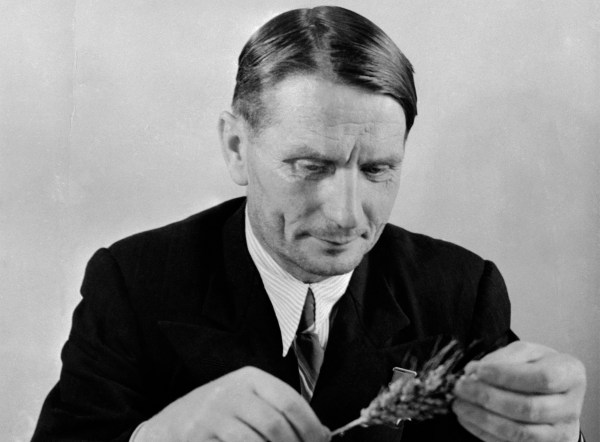Ultra-processed foods seem to be on everyone’s lips lately—and not just as a salty snack. A widely reported recent study from University College London asserts that such foods slow weight loss. A report last month from the Centers for Disease Control and Prevention sounds the alarm that Americans consume more than half of their diets in the form of ultra-processed foods. Health and Human Services Secretary Robert F. Kennedy Jr. doesn’t like ultra-processed foods one bit, and strategies for reducing their footprint figure prominently in his plans to Make America Healthy Again.
Ultra-processed foods (UPFs) have been blamed for everything from obesity to cancer to depression. The case against these types of foods would likely be open and shut, if it weren’t for one problem: active disagreement as to what “ultra-processed” actually means. While consumers may know they should avoid ultra-processed foods, without a clear understanding of what constitutes an ultra-processed food it’s hard for them to know what exactly they should be avoiding.
A new way to classify processed foods.
Researchers at the University of São Paulo introduced the term “ultra-processed food” in 2009. They argued that the system for formulating dietary recommendations, as emblemized by the USDA “food pyramid,” was outdated. Instead of recommending daily allowances based on the nutritional content of food (leafy greens good, fatty meats bad), they argued, policymakers should be evaluating foods based on the levels of processing they undergo prior to ending up on store shelves. What made foods healthy or unhealthy, in other words, was the extent to which they had been industrially smushed, squished, dried out, and treated with various chemicals to make them shelf-stable and visually appealing.
This system, known as the Nova (“new” in Portuguese) system, assigns foods to one of four categories:
- Unprocessed or minimally processed foods
- Processed culinary ingredients
- Processed foods
- Ultra-processed foods
Category 1 consists of fruit, vegetables, nuts—basically anything that can be consumed raw. Category 2 consists of things people use to cook food but would probably not consume on their own—think olive oil, vinegar, salt, and sugar. Category 3 is what happens when food and those basic ingredients are put together to prepare and cook food. Category 4, the ultra-processed foods, is where the trouble ostensibly lies. This category comprises foods created by taking multiple substances from Category 2 and subjecting them to chemical and industrial processes, or adding ingredients that have themselves been substantially modified from their original sources, such as high fructose corn syrup or hydrogenated oils.
A key stipulation by the inventors of the Nova system was that ultra-processed foods by definition could not be produced or created in a typical household kitchen. One way to identify such a food item is to look at its list of ingredients and determine if it contains substances rarely or never used in kitchens. That’s a tipoff that some ingredients are used to make the food look or taste more appetizing.
The Nova system of scientific classification gained widespread attention and acceptance in the years following its publication. Ultra-processed foods featured prominently in the United Nations’ 2016 “Decade of Action on Nutrition” and have subsequently been referred to in thousands of scientific papers. Increasingly dire warnings about ultra-processed foods have overlapped with the increasing popularity of two fad diets: raw foodism, which argues against considerable medical evidence that cooking depletes the nutritional content of food, and the Paleo Diet, which encourages adherents to emulate the eating habits of humans prior to the Neolithic Revolution. In both cases, the proponents of these diets see “processing” of food as a necessary evil at best. This is not to suggest that the scientists behind Nova are peddling pseudoscience, merely that Nova classification is both intelligible and appealing to dieters whose culinary value system may be rooted in a romanticized version of ancient history and human origins.
MAHA’s war on ultra-processed foods.
Kennedy’s ascension to the helm of the federal department that oversees public health has drawn further attention to ultra-processed foods because of his longtime push for removing artificial dyes and other additives from food. UPFs—and criticism of them—feature prominently in a May report from the Make America Healthy Again Commission purporting to assess the causes of chronic disease in American children (so much so that the libertarian Cato Institute described the critiques as “pre-made conclusions”). While the report’s section on UPFs escaped the withering allegations that other parts of the report received for sloppy research citations, the authors still struggled to whittle down the Nova definition of UPFs, using the term “ultra-processed” to refer specifically to highly processed grains (think Wonder Bread), sugars (think corn syrup), and oils (think seed oils, a perennial target of Kennedy’s with little data to back up his warnings). Apparently the definition is still too vague, because the Food and Drug Administration and the Agriculture Department filed a request for information in July to help develop a “uniform definition” for such foods.
A new MAHA report from HHS is expected to produce policy recommendations (though not everyone is convinced). Those recommendations were due August 12 but have been delayed as the White House holds preview meetings with stakeholders. The recommendations have the potential to cause a significant rift in President Donald Trump’s coalition of supporters, with farmers and food manufacturers on one side and alternative health advocates on the other.
Trust the (ultra)process?
Plenty of scientists have expressed skepticism about using “processing” as a standard for understanding health outcomes tied to specific foods. One study found that even nutrition specialists struggled to assign foods to Nova system groups in a consistent manner. (This may be a good time to point out that this month’s CDC report listed “sandwiches” as the most consumed category of ultra-processed food.) Another study found that UPFs accounted for nutritionally meaningful differences in sugar and fiber but none in fat, sodium, or body mass index. Ultra-processed foods are often “energy dense,” meaning higher in calories—a designation that should give pause to anyone advocating to reduce their presence in developing countries. And finally, in the midst of the recent UPF noise, the American Heart Association felt the need to remind everyone that some foods considered ultra-processed, like whole-grain bread and low-sugar yogurt, are actually good for you.
An easier way to think about “ultra-processed food” is to consider it “junk food”—the time-tested designation for things that taste good and contain high levels of things that are bad for you (salt, sugar, fat) and low-to-nonexistent levels of things that are good for you (vitamins, fiber). The problem with this definition is that, while pretty much all junk food is highly processed, not all highly processed food is junk food, particularly not when the term is defined so broadly that it can include baby formula and plant-based milks.
Industrial food-processing technologies have made global food supplies cheaper and more durable, but UPF critics have a point that they also made it possible for our food to carry higher loads of unhealthy things. As the archaeologist Christina Warinner memorably pointed out in 2013, you would have to chew 8½ pounds of raw sugar cane in order to consume the equivalent amount of sugar in a 34-ounce soda. That’s concerning, but is it a sound basis for food policy? The definition of “ultra-processed” is so vague that it is tempting to see it as an expression of populist anger—and commercial opportunity—rather than public health policy.






Please note that we at The Dispatch hold ourselves, our work, and our commenters to a higher standard than other places on the internet. We welcome comments that foster genuine debate or discussion—including comments critical of us or our work—but responses that include ad hominem attacks on fellow Dispatch members or are intended to stoke fear and anger may be moderated.
With your membership, you only have the ability to comment on The Morning Dispatch articles. Consider upgrading to join the conversation everywhere.